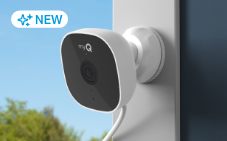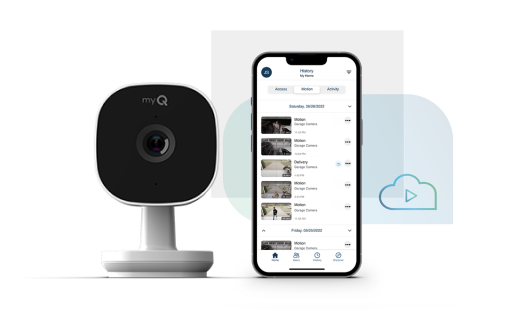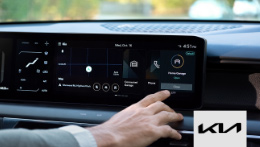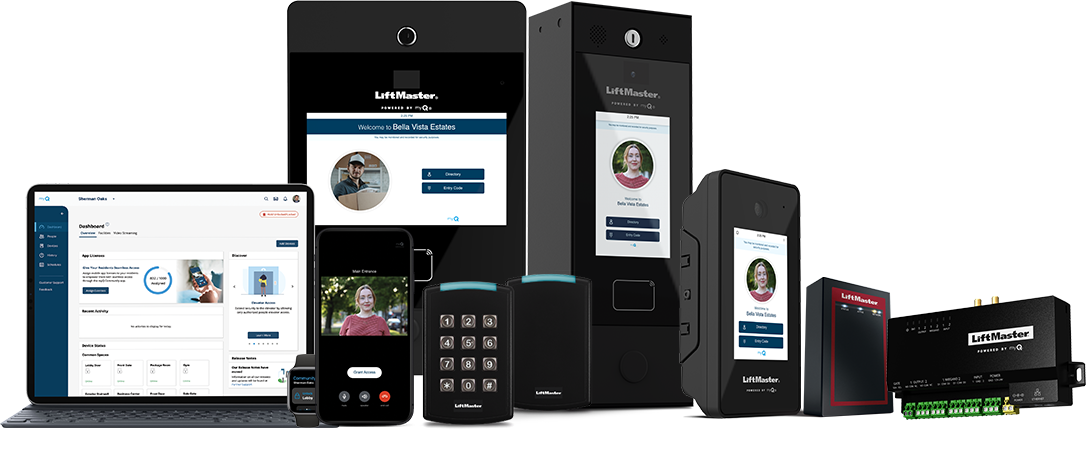Bluetooth vs. Wifi
Bluetooth vs. Wi-Fi: Key Differences Explained
Remember when connecting your devices to the internet or to each other was impossible without tripping over a tangle of wires? Thanks to the invention of Wi-Fi and Bluetooth, those days are long gone.
In fact, although Bluetooth and Wi-Fi technologies are less than 50 years old, they have already transformed daily life. .
Wi-Fi and Bluetooth are so prevalent in newer tech that everything from headphones to refrigerators likely utilizes at least one of these capabilities. That said, what is the difference between Wi-Fi and Bluetooth? While these technologies often work seamlessly together, they each serve their own purpose. .
In this article, we break down the key differences between Bluetooth vs Wi-Fi, helping you understand how each technology enhances convenience—whether at home or on the go. .
What are Bluetooth and Wi-Fi?
When comparing Wi-Fi vs Bluetooth, it's important to understand what each technology does. .
Essentially, Bluetooth and Wi-Fi are like two invisible roads. Bluetooth connects to the next destination over a short distance, while Wi-Fi leads out into the vast world (wide web) beyond. .
Here’s everything you need to know about these two types of wireless connectivity. .
Bluetooth Technology
So, what is bluetooth? Bluetooth is a wireless technology that uses radio frequencies for short-range data transfer between devices. This connection does not require a router or internet connection, allowing seamless communication between devices within range. For example, Bluetooth technology is the hands-free setting that connects your phone to your car’s speakers. .
The radio frequency Bluetooth operates on is the 2.4 GHz range, and this technology has evolved into two distinct standards to meet different connectivity requirements: .
- Bluetooth Classic – The traditional standard for continuous, stable connections that require moderate data transfer.
- Bluetooth Low Energy (LE) – A newer innovation, Bluetooth LE is the go-to choice for smaller devices due to its energy efficiency.
Bluetooth technology has advanced significantly since its inception, enabling connectivity across multiple devices. With each new version of the tech, range, speed, and reliability improve, ensuring seamless compatibility with your existing Bluetooth accessories as you upgrade your devices. .
Wi-Fi Technology
Wi-Fi provides high-speed internet and network communications. Like Bluetooth, this transfer also happens across radio waves. .
Wi-Fi operates through a two-way communication process. When you browse the internet, your device’s wireless adapter converts data into radio signals and transmits them—this is known as an upload. Meanwhile, your router receives data from the internet, converts it into radio signals, and broadcasts them to your connected devices. These devices then decode the signals into usable information. This process works in reverse for downloads. .
Interestingly, the term "Wi-Fi" does not stand for anything. A branding agency coined the catchy name to provide a more user-friendly alternative to the technical specification, IEEE 802.11. The Wi-Fi Alliance, originally known as the much wordier Wireless Ethernet Compatibility Alliance, adopted this snappy name to make the technology more approachable for everyday users. .
Key Differences Between Bluetooth and Wi-Fi
Both Bluetooth and Wi-Fi have become fundamental to interacting with our devices and homes. However, to truly understand when to use each technology, we must examine the difference between Wi-Fi and Bluetooth. For instance, does Bluetooth work without Wi-Fi? Yes, it does! Bluetooth is a standalone technology that doesn’t rely on Wi-Fi to function, making it ideal for short-range, direct device connections. .
The capabilities of these two technologies vary dramatically depending on the purpose of your connection: .
- Range – Bluetooth’s range is generally shorter than Wi-Fi, with Bluetooth averaging about 33 feet. The average distance of Wi-Fi routers operating is up to 150 feet indoors and 300 feet outdoors, although the age of the router, network interference, and obstructions like large furniture or walls can affect the distance. If you're wondering whether Bluetooth interferes with Wi-Fi, it can sometimes cause issues, especially in crowded spaces with lots of devices.
- Speed – Wi-Fi is generally faster than Bluetooth. Depending on the device, Bluetooth can transfer data from 0.3 Mbps to 2Mbps, which is ideal for streaming music or transferring photos from one device to another. Meanwhile, the most popular Wi-Fi packages will transfer 450 Mbps to 600 Mbps, up to a maximum of 1300 Mbps.
- Connectivity – Bluetooth’s main draw is its direct device-to-device connection, usually supporting multiple connections at once on one central device. On the other hand, Wi-Fi can handle dozens of simultaneous connections through a central access point.
- Power consumption – Bluetooth, particularly Bluetooth Low Energy (LE), is designed to be more power-efficient. This makes Bluetooth ideal for battery-powered devices that do not require an internet connection to function. Wi-Fi does require more power, but this is because it has the bandwidth necessary for data-intensive tasks.
- Device compatibility – Bluetooth’s universal standardization makes it easy for devices from different manufacturers to link together seamlessly. Most devices that need to connect to the internet to function will be Wi-Fi compatible, although smaller devices like headphones or speakers may only be Bluetooth compatible.
- Radiofrequency – While Wi-Fi used to also only travel at the 2.4 GHz frequency like Bluetooth, another frequency is gaining popularity. 5 GHz connections are more easily disrupted by obstructions like walls but are favored for their faster speed.
When to Use Bluetooth vs. Wi-Fi
Whether you’re setting up new smart home devices or trying to get the best performance from your existing ones, knowing which technology to use can help simplify the process. To that end, let’s explore the best times to use Bluetooth vs the best times to use Wi-Fi. .
Scenarios Where Bluetooth Excels
Bluetooth's simplicity makes it the perfect choice for personal, short-range connections where battery life and ease of use are priorities.
Additionally, these technologies best suit Bluetooth: .
- Wireless accessories – Thanks to the simplicity of the pairing process, accessories like wireless keyboards, mice, and game controllers work seamlessly with Bluetooth. The direct connection allows for responsive control without going through a complicated network setup to pair them to your primary devices.
- Personal audio devices – Bluetooth’s low power consumption and direct connection make it ideal for personal audio devices like wireless headphones, speakers, and car sound systems.
- Wearable technology – Fitness trackers, smartwatches, and health monitors can all benefit from Bluetooth’s energy-efficient, short-range connectivity. These devices can maintain constant communication with your smartphone to transfer data like heart rate, step count, and even text messages while maximizing battery life.
These personal, battery-efficient connections make Bluetooth the ideal choice when you need reliable, direct device communication without the complexity of network setup. Its low power consumption and easy pairing process ensure your devices stay connected without draining their batteries.
Scenarios Where Wi-Fi Excels
Wi-Fi’s internet access and increased speed make it the better choice for data-intensive tasks or devices requiring internet connectivity.
For instance, Wi-Fi is optimal for these situations:
- High-speed data transfer – Wi-Fi's superior speed is necessary when transferring large files or streaming high-definition video. This is especially important for smart security cameras and video doorbells that need to transmit clear, high-quality video.
- Internet-connected devices – Any device that connects to the internet will need Wi-Fi for full functionality. This includes laptops, PCs, and gaming consoles, as well as smart home devices that need constant internet access, like smart cameras or security systems.
- Multiple device networks – Wi-Fi's ability to handle simultaneous connections makes it ideal for homes with various smart devices. This allows everything from your smart TV to your refrigerator to stay connected and communicate smoothly.
Wi-Fi forms the backbone of any modern smart home thanks to its ability to handle multiple connections and data-intensive tasks. Ultimately, it is essential for keeping your home's digital ecosystem running smoothly. .
How myQ Uses Bluetooth and Wi-Fi for Smart Home Solutions
Creating a smart home that seamlessly aligns with your daily life requires finding the best tech for the job. That's why myQ has thoughtfully integrated Bluetooth and Wi-Fi capabilities into our smart home devices, using the strengths of each technology to provide you with convenient and reliable access to your devices anytime, anywhere.
This dual-connectivity approach ensures that you can:
- Control your smart home devices with lightning-fast response times
- Monitor your home's access points from anywhere through the myQ app
- Share secure access with family members, neighbors, or service providers
- Stay connected to your devices at home, even when your internet connection fluctuates
- Enhance security through real-time video live streams and device monitoring
- Easily integrate myQ tech with other smart home devices in your smart home
These technologies combine to create a more reliable smart home ecosystem, building a complete vision for the modern smart home—whether you're checking your garage door status from work or granting access to the dog walker from your phone.
Making the Most of Connectivity with myQ
While Bluetooth and Wi-Fi have unique use cases, learning more about how each technology works helps you better understand the devices that make up your smart home. While Wi-Fi connects your home to the broader world and handles heavy lifting like security camera feeds, Bluetooth ensures reliable local control and provides backup connectivity when needed.
Explore myQ's collection of smart home devices with Bluetooth and Wi-Fi compatibility to experience a more convenient, faster, and secure smart home. Our innovative smart home products leverage the best of both technologies to deliver reliable performance and peace of mind from your home and abroad.
Sources:
Intel. What Is Bluetooth® Technology? https://www.intel.com/content/www/us/en/products/docs/wireless/what-is-bluetooth.html
Optimum. What Is Wifi, How It Works & How to Get It. https://www.optimum.com/articles/internet/what-is-wifi
Bose. Understanding Bluetooth range: How far does Bluetooth reach? https://www.bose.com/stories/bluetooth-range-how-far-does-bluetooth-reach
LifeWire. What Is the Range of a Typical Wi-Fi Network? https://www.lifewire.com/range-of-typical-wifi-network-816564
Recables. How To Improve Bluetooth Speed. https://recables.com/bluetooth/understanding-improving-bluetooth-speed/
Social Wifi. What’s the Difference Between 2.4 and 5 GHz WiFi? https://socialwifi.com/knowledge-base/wifi-technology/difference-between-24-and-5-ghz-wifi/
 Smart Cameras
Smart Cameras



 Fire Station
Fire Station
